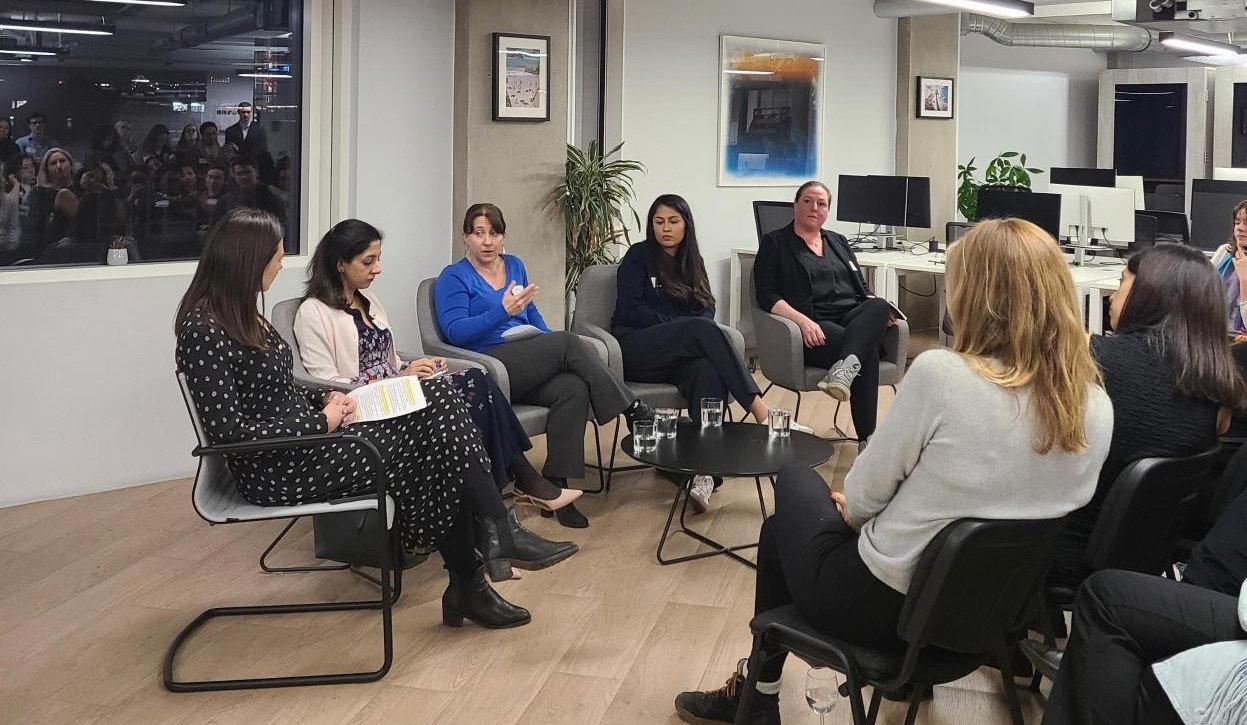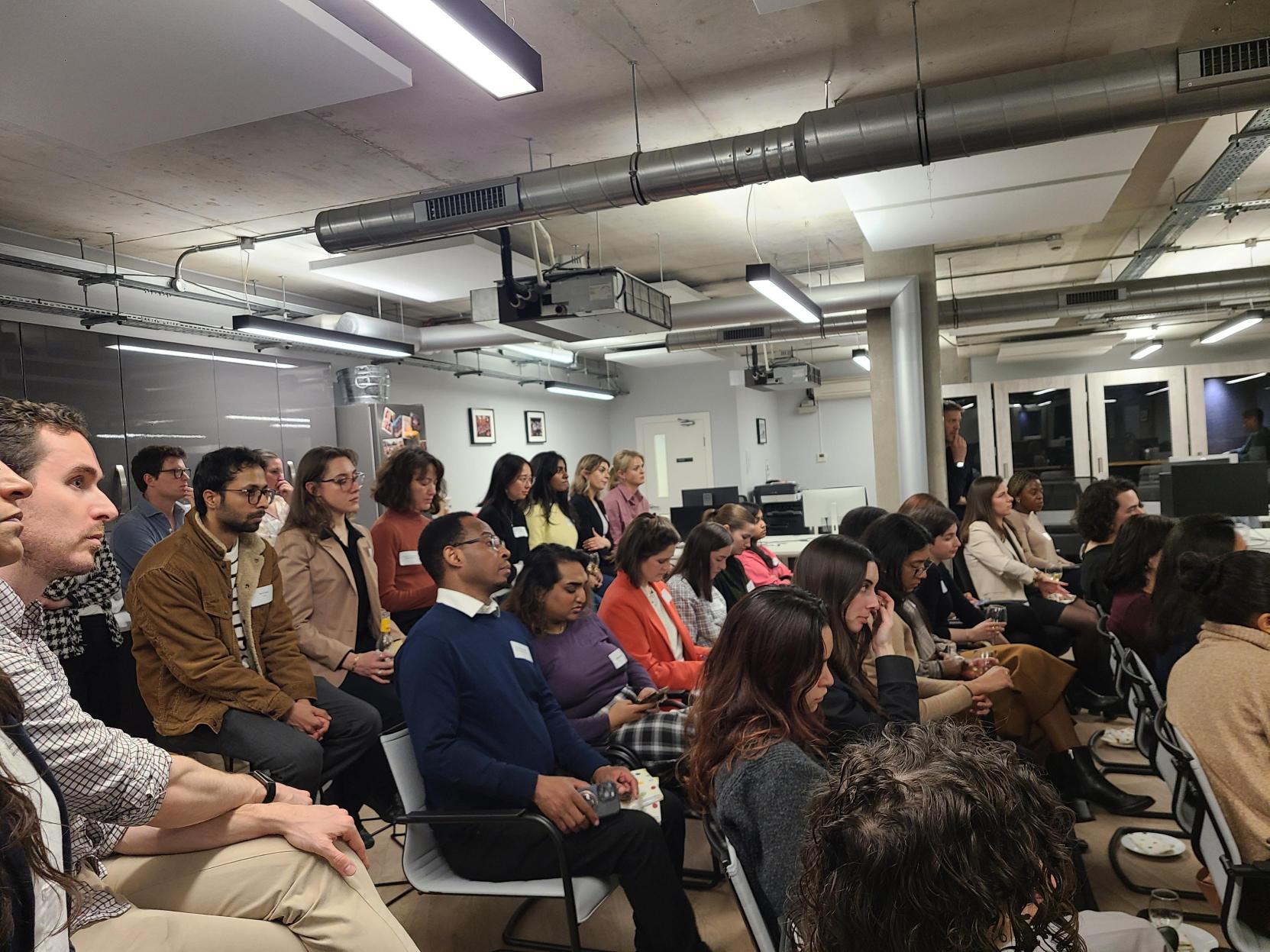Dalberg uses cookies and related technologies to improve the way the site functions. A cookie is a text file that is stored on your device. We use these text files for functionality such as to analyze our traffic or to personalize content. You can easily control how we use cookies on your device by adjusting the settings below, and you may also change those settings at any time by visiting our privacy policy page.
Technology is transforming women’s health—but to realize its promise, innovation must be shaped by women’s lived experiences, grounded in representative data, and supported by strong digital infrastructure to bridge the digital divide. Funders, digital health innovators, and government leaders shaping the future of health systems, play an important role in ensuring that the growing investment in women’s healthtech drives innovation that is inclusive, equitable, and responsive to the diverse needs of all women.
As digital health tools, AI, and new delivery models rapidly reshape global health, they are also creating powerful new opportunities to close long-standing gender gaps in care, earlier diagnoses, personalized treatment options, expanded access to services, less biased research, and smarter use of overstretched systems, including task shifting to free up clinician time. This is the moment to address historic inequities in women’s health—such as delayed diagnoses, misdiagnosis, and unequal access to quality care. Emerging technologies have the potential to reverse these trends by enabling faster, more personalized, and more equitable care. However, if not designed and implemented thoughtfully, these same tools risk entrenching the very inequalities they aim to solve.
To surface cross-cutting insights and help advance the conversation on how technology can shape a more equitable future for women’s health, Dalberg convened a panel of experts at our London office for International Women’s Day. The conversation featured Jennifer Gassner (MSI Reproductive Choices), Dr. Becky Inkster (Neuroscientist and Advisor at Wysa), Divya Sarwal (Clinton Health Access Initiative), and Dr. Hiba Sher Khan (Maven Clinic and NHS medical doctor), who brought perspectives from across the ecosystem—as practitioners, researchers, innovators, and market shapers. Their insights point to three priorities that must shape the future of women’s health tech.


Centering Care on Women’s Lived Experiences
Designing for women’s health requires more than addressing clinical gaps, it requires tackling the underlying trust gap. The panelists emphasized that effective women’s health innovation starts with listening and were clear that while technology has a role to play, it must complement rather than replace human care. Dr. Inkster (Wysa) shared powerful personal experiences from research environments where the researcher would work collaboratively with women who had experienced mental health challenges, using this two-way dialogue to inform the final outputs. This level of listening allows the design of solutions that reflect the complexities of women’s health journeys. Dalberg’s work across women’s health has shown that rebuilding trust starts with centering women’s voices, not only in care delivery, but in how services are designed, communicated, and continuously adapted to reflect lived experience.
Too often, women have experienced being dismissed in clinical encounters, particularly in relation to pain, reproductive health, or mental well-being – a reality which creates distrust in healthcare systems.
Using digital tools effectively with human-led care can be one way to rebuild trust with patients, by enabling more responsive and personalized care. For example, Dr. Khan (Maven Clinic) shared that in her practice, the ability for patients to create personal records and using existing resources to inform themselves ahead of their appointment helps them make the most of the session.
Sarwal (CHAI) shared the potential of self-sampling in cervical cancer screening in low- and middle-income countries, where studies have found that most women preferred to self-sample, citing privacy as a key advantage. In healthcare settings, CHAI has also been working with GH labs and Unitaid to explore the potential of AI-enabled cervical cancer screening tools which may offer greater sensitivity in detecting pre-cancerous lesions than visual inspection – a common but highly subjective screening method in many LMICs.
Overall, the panelists were clear that technology must not be seen as a way to replace human care; it must empower it.
Closing the Gender Data Gap—Responsibly
The gender data gap remains one of the most persistent and complex barriers to advancing women’s health. At a systemic level, the lack of inclusive, high-quality data has downstream effects across the entire innovation pipeline – from biased algorithms and inaccurate diagnostics to limited effectiveness of health interventions and tools. For example, a recent review of over 1,000 clinical trials found that women made up just 41% of participants on average. In the U.S., African American and Hispanic women represent 12% and 19% of the population, respectively, yet account for only ~4% and ~5% of clinical trial participants. When data sets fail to represent women, especially those from underrepresented and marginalized communities, the solutions built on those datasets not only reinforce inequities but also weaken health outcomes across the population.
Dalberg’s experience in global health and digital strategies highlights the need to shift from reactive data collection to intentional, equity-centered data design. This means going beyond sex-disaggregated information and capturing intersectional variables (such as age, geography, income, and ethnicity) that influence health outcomes. It also means embedding safeguards around privacy, consent, and ethical use.
A key challenge to fostering better data sharing is data security, which is a growing and meaningful risk. Gassner shared that MSI Reproductive Choices—which holds patient reproductive health and abortion data, frequently faces deliberate cyber security attacks. As a result, building and maintaining data security is a significant investment for organizations working on women’s digital health and one that innovators and funders should not overlook. Without better data—and stronger protection for that data—health tech runs the risk of compounding gender bias and exposing women to new vulnerabilities.
Building the Infrastructure for Scale and Inclusion
Access to digital technologies for women’s health goes beyond the technology itself—infrastructure is also critical. Without stable access to electricity, interoperable systems, and digital literacy among patients and medical practitioners, the best-designed solutions would struggle to scale and include all. Panelists shared that in many low-income countries, power outages and connectivity—not product design—remain the biggest barrier to deploying digital health solutions. Yet infrastructure gaps aren’t confined to LMICs. In the UK and other high-income countries, outdated systems like paper-based records and fragmented digital platforms continue to hinder care delivery and slow adoption of new technologies.
In many settings, women are less likely to own digital devices or have independent access to health information—making the design of inclusive infrastructure a gender equity issue, not just a logistical one.
From reliable connectivity, to interoperable health records, and cloud-based platforms, building the digital backbone for health innovation is essential. Without these foundations, new technologies risk reinforcing existing inequalities, delivering benefits only to those in already well-resourced settings and leaving others behind.
In the context of World Health Day and its 2025 theme, “Healthy Beginnings, Hopeful Futures,” the imperative is clear: the future of women’s health will depend not just on what we invent but on how we implement it. Delivering on the promise of technology means ensuring that every innovation starts with equity, trust, and inclusion.
For funders, this means backing solutions that are co-created with women and rooted in equity from the start. For health tech innovators, it’s about embedding inclusive design, prioritizing data privacy, and building with—not just for—underserved communities. For policymakers and systems leaders, the call is to invest in the digital infrastructure and regulatory frameworks that make access equitable and scale possible.
At Dalberg, we are working with partners across the ecosystem—from large funders to social innovators—to advance women’s health through better strategy, inclusive product design, and systems transformation. Recent work includes illustrating how reducing gender-based violence creates conditions for better health outcomes, showing how menstrual health investments can improve care access and agency for women and girls, and learning from the pandemic’s impact on women’s access to health services in India to guide more resilient health systems. In our work at the intersection of tech and health, we also recently surfaced five digital innovations advancing maternal health, collaborated with the Robert Wood Johnson Foundation on using AI to identify and learn from global trends that can advance health equity in the United States, and supported the Belgian government during COVID-19 in using big data and AI to reduce disease spread. In each project, we are committed to applying a gender lens to shape a future where health systems are more inclusive, equitable, and responsive to women’s needs.
For further details, please contact:




